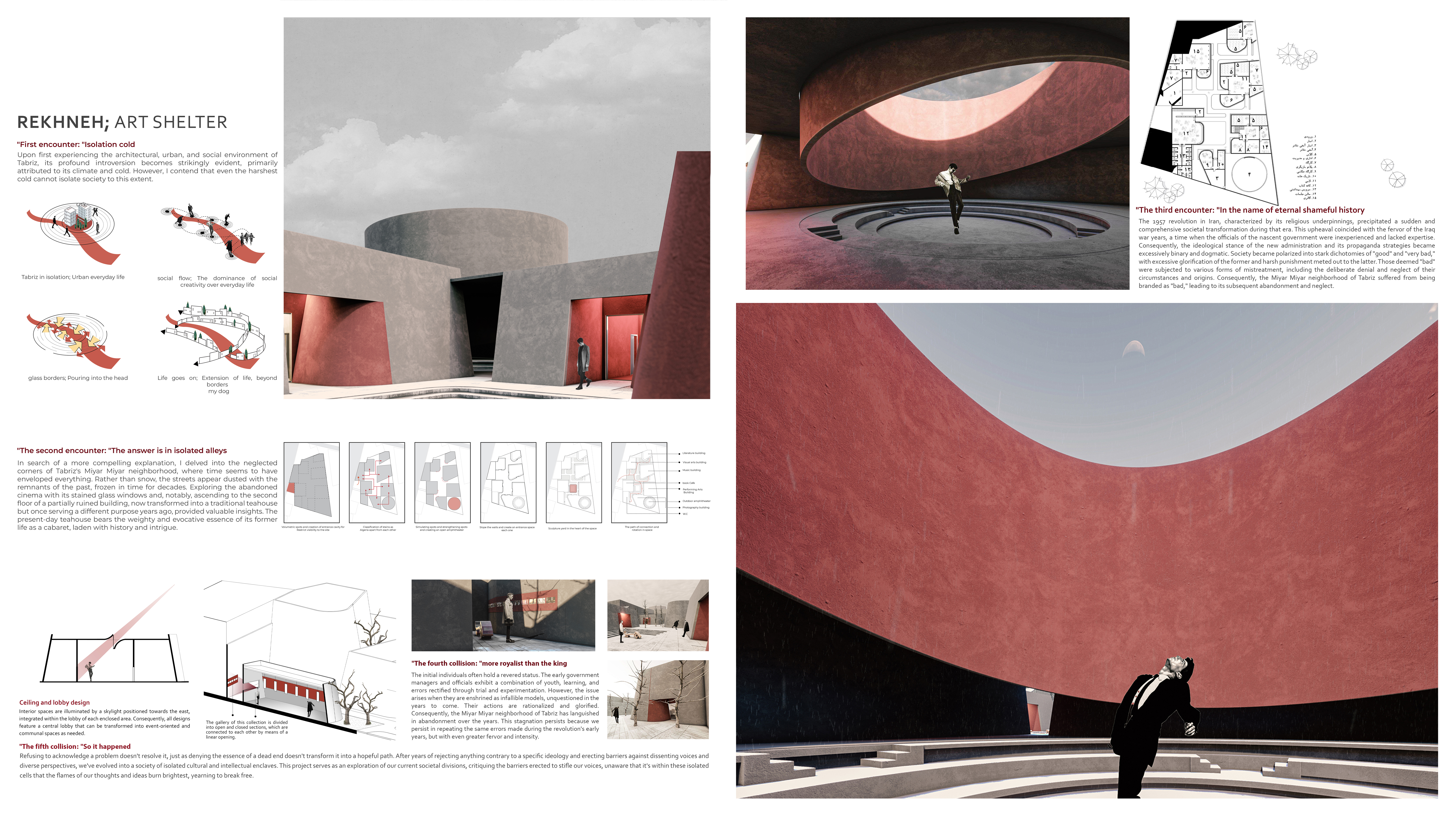2024 - Art shelter

Category
Daylight in Buildings - Region 2: Eastern Europe and The Middle East
Students
Mohammad Aref Ghorbani & Nikki Hadad
Teacher
Mohammad Ali BaniHAshesmi
School
Tabriz Islamic Art University
Country
Iran
Download
Download project board
First encounter: “Isolation cold”
Upon first experiencing the architectural, urban, and social environment of Tabriz, its profound introversion becomes strikingly evident, primarily attributed to its climate and cold. However, I contend that even the harshest cold cannot isolate society to this extent.
The second encounter: “The answer is in isolated alleys”
In search of a more compelling explanation, I delved into the neglected corners of Tabriz’s Miyar Miyar neighborhood, where time seems to have enveloped everything. Rather than snow, the streets appear dusted with the remnants of the past, frozen in time for decades. Exploring the abandoned cinema with its stained-glass windows and, notably, ascending to the second floor of a partially ruined building, now transformed into a traditional teahouse but once serving a different purpose years ago, provided valuable insights. The present-day teahouse bears the weighty and evocative essence of its former life as a cabaret, laden with history and intrigue.
The third encounter: “In the name of eternal shameful history”
The 1957 revolution in Iran, characterized by its religious underpinnings, precipitated a sudden and comprehensive societal transformation during that era. This upheaval coincided with the fervor of the Iraq war years, a time when the officials of the nascent government were inexperienced and lacked expertise. Consequently, the ideological stance of the new administration and its propaganda strategies became excessively binary and dogmatic. Society became polarized into stark dichotomies of “good” and “very bad,” with excessive glorification of the former and harsh punishment meted out to the latter. Those deemed “bad” were subjected to various forms of mistreatment, including the deliberate denial and neglect of their circumstances and origins. Consequently, the Miyar Miyar neighborhood of Tabriz suffered from being branded as “bad,” leading to its subsequent abandonment and neglect.
The fourth collision: “more royalist than the king”
The initial individuals often hold a revered status. The early government managers and officials exhibit a combination of youth, learning, and errors rectified through trial and experimentation. However, the issue arises when they are enshrined as infallible models, unquestioned in the years to come. Their actions are rationalized and glorified. Consequently, the Miyar Miyar neighborhood of Tabriz has languished in abandonment over the years. This stagnation persists because we persist in repeating the same errors made during the revolution’s early years, but with even greater fervor and intensity.
The fifth collision: “So it happened”
Refusing to acknowledge a problem doesn’t resolve it, just as denying the essence of a dead end doesn’t transform it into a hopeful path. After years of rejecting anything contrary to a specific ideology and erecting barriers against dissenting voices and diverse perspectives, we’ve evolved into a society of isolated cultural and intellectual enclaves. This project serves as an exploration of our current societal divisions, critiquing the barriers erected to stifle our voices, unaware that it’s within these isolated cells that the flames of our thoughts and ideas burn brightest, yearning to break free.

























